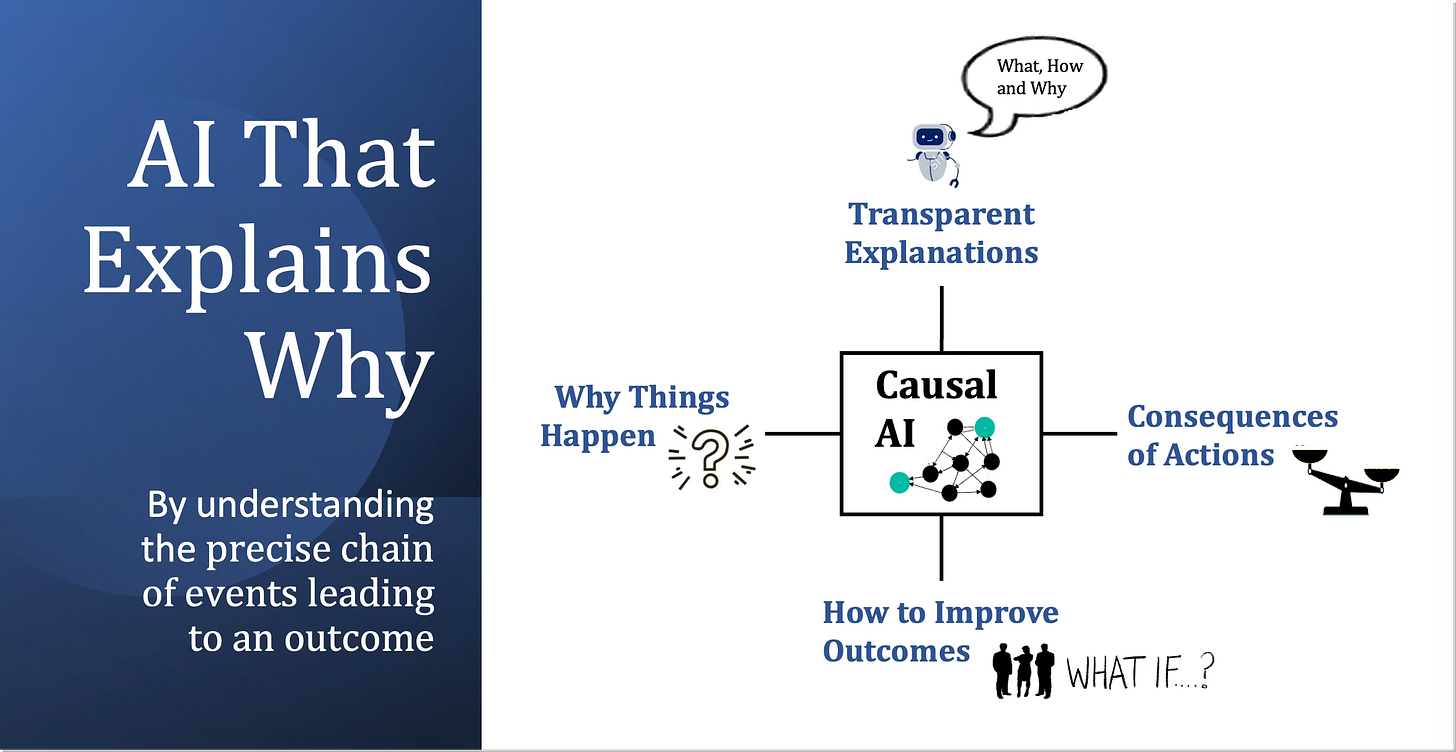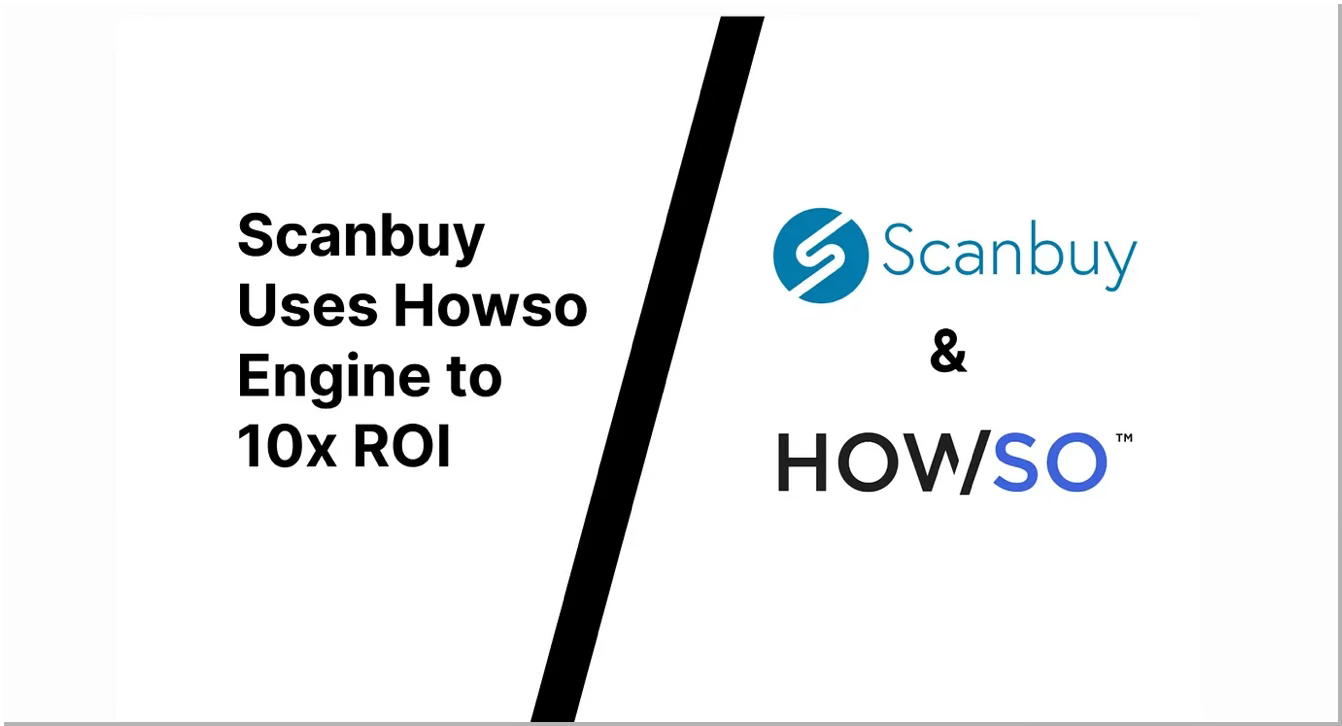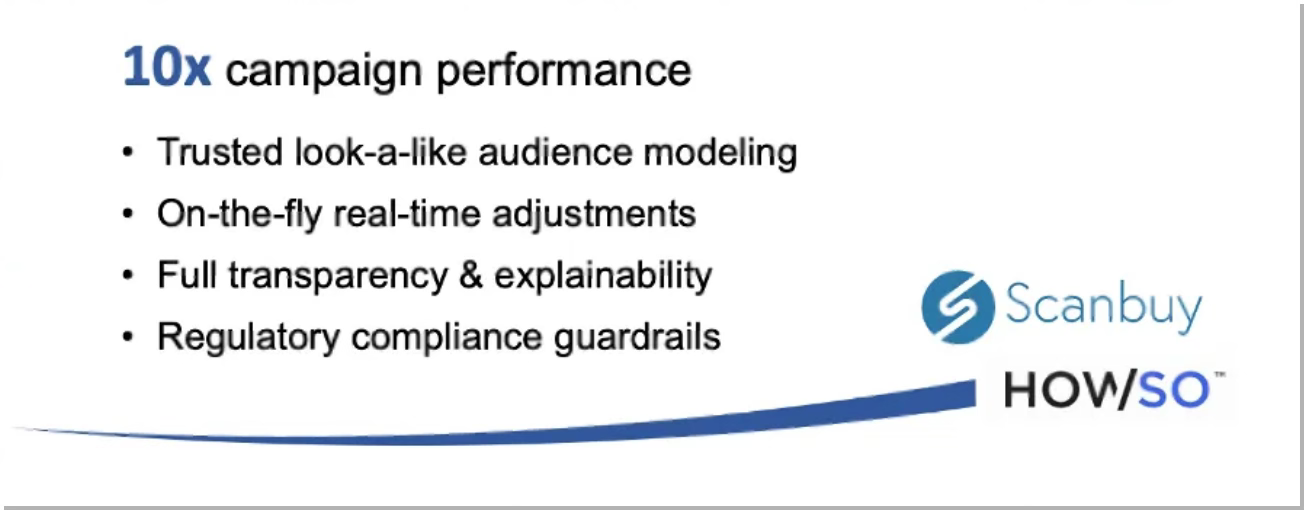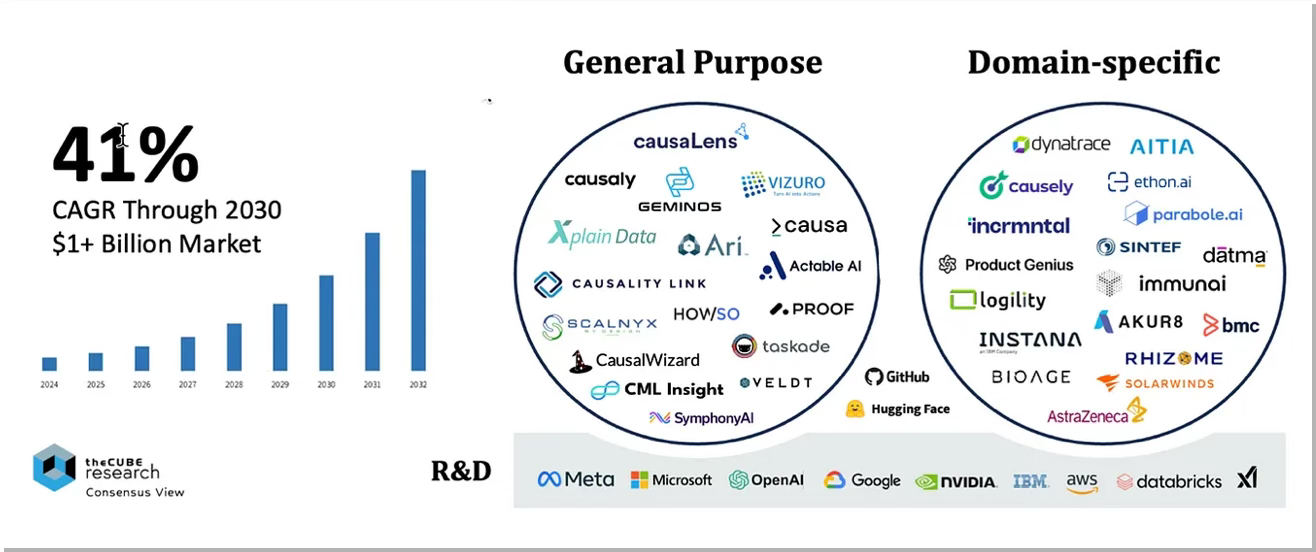Causal AI Drives 10x ROI in Ad Tech
Over the decades, each transformative technology has experienced more rapid innovation cycles, from client-server computing to the internet, cloud, and now AI.
The pace and speed of AI advancements will only accelerate from here, and businesses need to stay on top of the latest developments.
It‘s a lead, lag, or fail proposition.
This post continues the research into one of the most impactful advances, the emergence of causal AI, and why it will become an inevitable ingredient in future-state agentic AI systems.
We’ll explore the impact of causal AI in a real-world use case, featuring how Scanbuy, a leader in mobile advertising, and its partner, Howso, a pioneer in AI understandability platforms, have set a new standard for trust, transparency, and AI-driven ROI in programmatic advertising.
The Rise of Causal AI
While today’s generative AI and LLMs are incredibly impressive, one essential ingredient in decision-making is missing: causality and an understanding of why things happen.
Causality will enable businesses to do more than create predictions, generate content, identify patterns, and isolate anomalies. They’ll also be able to play out countless scenarios to understand the consequences of various actions, explain their business's causal drivers, and analytically problem-solve.
That is, they’ll know WHAT to do, HOW to do it, and WHY certain actions are better than others to shape future outcomes. This is key because predicting something is less valuable than knowing why something happened and what can be done differently to improve an outcome.
Simply put, humans are causal by nature, so AI must also become causal by nature. If, of course, the goal is to help humans problem-solve and make better decisions by mimicking how humans reason.
To solve problems, AI must understand “cause and effect” relationships and weigh the consequences of possible actions, just like humans do.
Furthermore, causal AI can explain precise pathways to an outcome and tell you how variables interacted, their values, and how much they influenced it. This helps to open up the “black box” of today’s AI, providing greater trust and transparency in AI recommendations and outcomes.
For these reasons, Many companies, such as Scanbuy and Howso, are already leading the way.
Scaling ROI in Advertising Tech
This use case explores how Scanbuy, a leader in mobile advertising and marketing solutions for over 300 of the world’s top brands, has partnered with Howso, a pioneer in AI understandability, to usher in a new era of trust in AI-driven advertising. As a result, it achieved an unexpectedly high ROI in mobile advertising campaign performance:
10x improvement in campaign performance without new spend
900K lookalike dataset with similar performance
Greater transparency and explainability of outcome drivers
Enable real-time adjustments by evaluating “what if” scenarios
A more information-rich process that eases regulatory concerns
Trust & Explainability
Trust has become the currency of success in the evolving landscape of programmatic advertising. As AI-driven models increasingly dictate advertising strategies, the need for transparency and accountability has never been more critical.
The recent discourse among industry leaders highlights a pervasive trust deficit in AI systems, exacerbated by opaque algorithms and inconsistent data practices.
Programmatic marketers everywhere are grappling with myriad challenges, from the deprecation of third-party cookies to the complexities of AI-driven decision-making.
For example, as advertisers scale their target audiences, only about 10% come from deterministic datasets, while 90% are probabilistic. These probabilistic audiences are typically generated via “black box” predictive AI models, such as LLMs, which cannot explain themselves and are prone to biases and inaccuracies.
As a result, agency executives are expressing a lack of understanding and trust in AI, fearing that poor data inputs will lead to suboptimal outputs, increased fraud, and new regulatory compliance challenges. Agencies are not the only ones concerned; brands and other actors in the ad tech value chain are also aware that the trust gap is increasing.
As Marc Le Maitre, Scanbuy’s Chief Technology Officer, stated,
“We operate in a data enrichment sector that is increasingly regulated, such as with the Digital Services Act in Europe, and we need to find new ways to bring AI transparency and explainability to the industry. If we don’t, using AI in advertising will deliver diminishing returns.”
The call for transparency is loud and clear; however, the path to achieving it remains elusive. This is why Scanbuy partnered with Howso, a pioneer in making AI understandable, to employ causal AI to help programmatic advertisers:
Understand the causal drivers of effective advertising
Generate lookalike audiences that are open and auditable
Make real-time adjustments and model hypotheticals (what if)
Provide meaningful information about ad creation
Simplify regulatory compliance reporting
Drawing inspiration from the trusted On-Board Diagnostics (OBD) systems in vehicles, which self-report faults and allow for deep inspection, Scanbuyhas adopted a similar approach to employ causal AI as the “check engine light” in the ad tech space. By leveraging the Howso instance-based learning theory alongside its causal AI capabilities, Scanbuy has provided advertisers with a transparent, auditable model for monitoring trust metrics in AI-driven campaigns.
Unlike traditional black-box models in today’s LLMs, Howso‘s approach delivers unparalleled transparency. It also enables real-time adjustments and hypotheticals to ensure that AI models remain aligned with evolving consent and regulatory requirements. Howso‘s perfect attribution traces decisions back to the source data, enabling complete audibility and fostering a culture of accountability and trust.
For example, with new counterfactual analysis capabilities, advertisers can explore “what if” scenarios, gaining insights into decision-making paths and potential outcomes. They can also enable real-time adaptability to advertising models by fine-tuning “on the fly” while ensuring compliance with the latest changes in regulatory guidelines and consumer consent. As a result, Scanbuy can probabilistically scale target audiences by up to 10x without degrading engagement rates, which typically experience up to 50% decay when using “black box” AI models that lack causality and full transparency.
The net outcome is that causal AI techniques helped to drive a breakthrough 10x ROI by achieving the same deterministic audience campaign success rate with a 10x larger audience, with no additional incremental campaign spending.
More strategically, Marc Le Maitre sees a broader industry-wide impact:
“We’re using LLMs and gen AI to explain the outcomes based on the causal models at the atomic level with almost no hallucination. The combination is fantastic. Causal AI is what we are flying our flag on. It’s exactly what the industry needs. It can tell us what caused an ad to be effective or rejected by their target audiences and help us determine if the advertising model is transparent enough to create benchmarks for audibility.”
This makes a ton of practical sense. For example, the European Digital Services Act says that when serving ads, you must show what caused this ad to be served to its target audience, what meaningful information was used to create it, and that you must give the recipient the opportunity to make changes to that ad when appropriate. There is no framework today on how to do that, which is becoming a critical need for digital advertising players. Causal AI may represent the key to demonstrating how auditable programmatic advertising can be across the algorithmic and decision-making process. Causal AI offers new levels of AI model integrity.
Marc’s experience is that Causal AI enables meaningful reinforcement learning with humans in the loop to improve ad effectiveness by understanding causal drivers of action and understanding the pathways to better outcomes. When a user sees an advertisement they don’t like, the causal model can understand why and rebuild itself to be better.
“If you don’t do this, you end up with model collapse or dementia. This is transformational. Creating transparent and explainable open-lookalike advertising models will transform the industry and likely reduce regulatory friction. It will democratize the industry at its core.”
The innovation at Scanbuy, in partnership with HowSo, promises to set new standard for transparency and trust in programmatic advertising by embracing causal AI. Just as Onboard diagnostics (OBD) systems have become a trusted standard in automotive diagnostics, Howso‘s approach to AI offers advertisers a reliable, transparent framework for navigating the complexities of modern ad tech. As the industry moves forward, those who prioritize trust and transparency will lead the way in delivering meaningful, compliant advertising experiences.
Based on their success, Scanbuy is now working with the IAB Tech Lab to position its approach to create industry standards for open and auditable AI advertising. This initiative would ease the complex regulatory landscape and foster greater trust among consumers and advertisers.
Read the full Scanbuy use case and download the Howso Causal AI starter kit to learn more.
The Causal AI Marketplace
The emerging Causal AI marketplace aims to address the limitations of current LLMs and generative AI solutions. This is particularly crucial for high ROI use cases that rely on root cause detection, decision intelligence, problem-solving, and autonomous action. AI professionals working on these cases recognize that integrating causality is essential for modeling the dynamic business environment and enhancing AI trust and explainability.
The marketplace is speaking louder and louder.
While the commercial marketplace is somewhat ill-formed, I expect it to solidify and rapidly expand from here, with a projected 41% CAGR through 2030 to around a $1 billion marketplace.
You can read more about the emerging Causal AI Marketplace here.
What to DoThe
Scanbuy use case illustrates one of the countless ways in which causal AI will reshape how businesses solve complex problems. Stay tuned for a series of market briefs that will explore additional high-ROI use cases.
With the emergence of an array of tools and platforms that democratize the use of causal AI for the masses, perhaps the time is now to start preparing.
Build competency in both agentic and causal AI
Evaluate the impact of causality on your use cases
Engage with the ecosystem of pioneering vendors
Experiment with the technology and build talent
I also recommend checking out the following:
Causality: The Missing Ingredient
Thanks for reading. Feedback is always appreciated.
As always, contact me if we can help you on this journey by messaging me on LinkedIn.









